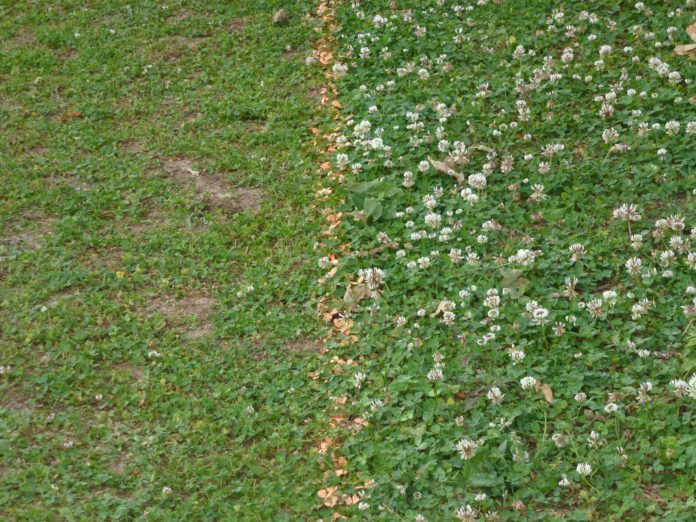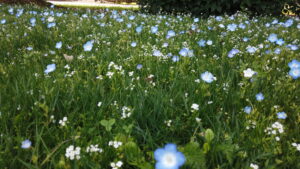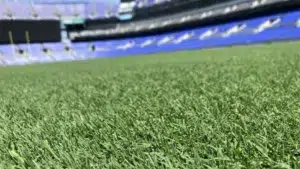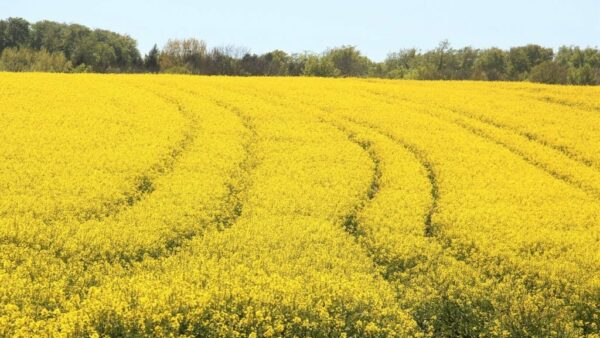Some of numerous reasons for growing a clover lawn include drought tolerance, sustainability, and its ability as an organic fertilizer.
Growing a beautiful grass lawn requires a fair amount of water and sun. But how about a little luck as well?
In an effort to be more ecological, the interest in clover lawns is gaining in popularity. In addition to being visually interesting with a texture that is quite different from grass, clover is easy to grow, drought-tolerant and will thrive in both sun and shade. And, if there’s a chance of finding a four-leaf clover or two, that’s an added bonus.
While some may view clover as a weed, no one can argue that we must continue efforts to reduce the harmful effects of pesticides. A great alternative is a clover lawn, which is both versatile and low maintenance, and helps reduce the effects of pesticides, which is essential for our planet.
Turfgrass vs. Clover
Clover is a sustainable lawn choice because it does not require nitrogen fertilizer and can survive with little to no irrigation in northern cool humid climates, such as the northern United States and Canada, says Alec Kowalewski, an associate professor at the College of Agricultural Sciences at Oregon State University in Corvallis, Ore.
“Conversely, turfgrass lawns require several nitrogen applications per year and relatively frequent irrigation for sustained growth and development. However, if you do not mow clover, it will grow up to several inches. So, weekly mowing might be preferred for those desiring a low-profile lawn.”
Carolyn Breece, senior faculty research assistant II, at Oregon State University, agrees and adds that a clover lawn — when allowed to flower — can offer pollinators nectar (carbohydrates) and pollen (protein). Conversely, traditional grass lawns provide no benefits to a pollinator.
“This is particularly important in the drier months of the summer (August and September), when other forage resources are minimal,” she says. “Clover lawns can flower late into the season, offering pollinators critical nutrition during an otherwise stressful period. This is a tremendous benefit for overwintering pollinators, such as honey bees. Late season nectar will allow honey bees to continue building their winter stores and late season pollen will provide nourishment to a developing brood, which will become long-living winter bees.”
Calling clover a “workhorse,” Kowalewski says it is so strong that it tends to shade out other plants. Eventually a lawn could end up as a simple mixture of clover and perennial ryegrass, which allows the look of a traditional lawn with the benefit of clover providing food for pollinators and nitrogen to other plants.
Types of Clover
While there are different types of clover, some varieties perform better for backyards and lawns.
For instance, Dutch white clover is probably the most common variety for lawns. Not only will it produce many flowers and stay green throughout the years, but it is also popular with bees looking for nectar. However, this is an aggressive type of clover with growth that will need to be closely monitored.
Erin Dale is with Apache Seeds Limited, which is based in Edmonton, Alta. She says the company has sold Dutch white clover seed for many years to incorporate into existing turf.
“However, there has been a resurgence of interest in monoculture clover lawns and alternative ground covers to replace traditional grass lawns in our area especially following the heat and drought conditions of 2021.”
A variation of white clover is microclover which has smaller leaves and fewer blooms. However, it is a lot more tolerant to foot traffic and mowing, and is a great option for homeowners with children and pets.
She adds that demand has been increasing over the past five years with microclover, seed, in particular, becoming a top seller.
“There has also been a lot of interest in wildflower and insect habitat. In addition to perennial Dutch and microclover, we are seeing some yards incorporate color with red and crimson clover. Clover will thrive in a variety of climates.”
From a personal standpoint, Dale says last year she seeded an insect-friendly wildflower mix in front of her house, and a monoculture of Dutch white clover in the backyard with the intent of growing insect habitat around the edge of the yard.
“The clover has really held up well with active dogs and we are seeing quite a variety of insects in the yard. We mow twice or three times a month with a reel mower and have not needed to water after the clover was established.”
Many people find the appeal of microclover, because it blends in with turfgrass, says Christa K. Carignan, coordinator, Digital Horticulture Education, at the University of Maryland Extension Home and Garden Information Center in Ellicott City, Md.
“These micro-varieties also have a less aggressive clump-forming habit compared to Dutch white clover,” she says.
She references a University of Maryland Department of Plant Science and Landscape Architecture research paper where turfgrass specialists Thomas Turner and Mark Carroll recommend late summer to early fall — in the mid-Atlantic region — as the preferred time to seed a turf-type tall fescue, microclover, lawn.
And, while successful seeding may be done in the spring, the risk of poor stand increases substantially due to weather-related problems such as heat and drought, and from competition from both broadleaf weeds and annual grasses, such as crabgrass.
Leah Brilman is director of Product Management and Technical Services at DLF in in Halsey, Ore. She says any place you see white clover growing as a weed in lawns, a clover lawn can be planted. In many sites, partial reseeding every two to three years helps to maintain the stand of clover.
“Others types of clover that work well for lawns include strawberry clovers, which tend to be naturally low growing with a pinkish flower. And, while they are naturally drought tolerant and tolerate higher salinity and waterlogging than other clovers, they can be slower to establish in a stand.”
Red clovers — which have pink to red flowers — will not tolerate being mown as low as white or strawberry clovers and tend to have shorter stand life. They do, however, have a deep tap root for drought tolerance and can withstand more shade than white clover.
“Crimson clover is an annual with bright flowers that can be seeded in fall for spring show and possible natural reseeding,” explains Brilman. “And Alsike clover tolerates acid soils and cold conditions, but does not spread and is short lived. These can be additions to your clover or clover-grass lawn.”
Honeybees love white and strawberry clover as do many native bees and bumblebees. However, red clover is better suited to long-tongue bumblebees and, after dark, many moths visit it. Butterflies use clovers for food and also some have larvae that utilize clovers. Both native and introduced pollinators utilize clovers.
Sustainable Lawn Choices
Clover lawns are a great choice especially due to their sustainability. Not only do they not require the addition of nitrogen fertilizer, they require less mowing and can be more drought tolerant than many older lawns, and also have reduced herbicide needs.
“Clover fixes nitrogen naturally and can reduce the amount of synthetic nitrogen applied to lawns,” says Carignan. “In Maryland, nitrogen pollution is a problem in the Chesapeake Bay, and our Maryland Lawn Fertilizer Law limits the amount of nitrogen that can be applied to lawns.”
She adds that clover flowers provide a source of food for (some) pollinating insects. However, insect populations and insect diversity are in dramatic decline due to habitat loss.
“Pollinators are essential for food and seed production. Traditional lawns do not provide much in the way of habitat or food for beneficial insects, compared to gardens with greater plant diversity and structural diversity (groundcovers, shrubs, trees) and native plants to support native bees.”
Clover can also be combined with turfgrasses for wear tolerance and stand diversity. This allows the benefits of clover combined with more traditional grasses.
Brilman says the combination of turfgrass and clover enables the turfgrass to survive without additional fertilization.
“With or without grasses, clover lawns often have less weeds, which decreases herbicide use. Clover lawns are also more resistant to dog spots, but are more likely to contribute to grass stains in clothing.”
As for care, clover lawns can be maintained from low to high maintenance depending on the needs of the customer. It can be mown down to a half-inch or left unmown. If left unmown, the leaves will become larger and the stand less dense. Growers can also determine the amount of flowers by how often and at what height they are allowed to grow. No nitrogen is required if inoculated with Rhizobia at planting and occasional watering based on needs.
“And whether clover is left alone or mixed with turfgrasses, this contributes to less hidden carbon costs and increases the net carbon sequestration,” adds Brilman. “The additional appeal to pollinators increases the ecosystem benefits.”













